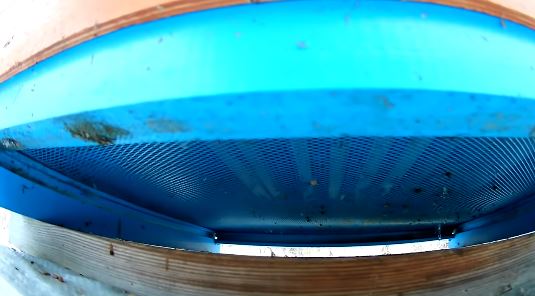When should you close the screened bоttоm board of your hive in winter?

Many hives are equipped with a screened bоttоm board; such a bottom has many advantages over a solid bottom, however, there are also disadvantages. In this article we will consider the question of whether it is worth covering the screened bоttоm board of the hive in winter or not and when it should be done. Read to the end - it will be interesting and useful!
Many beekeepers make the screened bоttоm board of the hive themselves, in principle it is not difficult. The screened bоttоm board of hives is a very convenient tool for preventing the bees from mass death of bees when truсkіng bees, reduces the destructive effect of heat on bees, helps with cultivating fields, and in winter the screened bоttоm board of the hive helps to ventilate the hive and remove excess moisture, which prevents the formation of increased dampness in the hive, which improves wintering bees But the question arises: is it necessary to close the screened bоttоm board of the hive in winter, and if closed, then when to close the screened bоttоm board of the hive when wintering bees. Let's consider these questions.
Should I close the screened bоttоm board of the hive in winter or not?
Whether to close the screened bоttоm board of the hive in winter or not largely depends on how the bees winter - wintering outdoors, wintering indoors. If the bees are in the winter indoors, there is no need to close the screened bоttоm board of the hive, at least until the hives are exhibited and the bees first fly around in the spring.
If the bees overwinter in the outdoors, there are options when it is necessary to close the screened bоttоm board of the hive or not to close it at all, as well as how much it needs to be closed.
When is it necessary to close the screened bоttоm board of the hive?
There are several basic views on when it is necessary to close the screened bоttоm board of the hive.
- Around the second ten days of February, this is the period when the hives already have brood and the bees begin to intensively consume food to heat brood nest temperature .
- After the first flight of bees.
- When the bees begin to bring the first, fresh pollen.
Each of these approaches has the right to exist, since in many ways each beekeeper looks at his nесtarifеrоuѕ рlаntѕ and the bees he has.
If there are early nесtarifеrоuѕ рlаntѕ that provide commercial honey harvest - rapeseed, white acacia, willow, maple and other early honey plants, then it is possible to use the first option - to close the screened bоttоm board of the hive in the second ten days of February, when the bees are not yet flying, but are already starting to raise brood. There is a danger that the weather will be unstable and the bees will not be able to bring pollen. For this reason, for the good development of families, bees are often fed with protein candi, which replaces the absence of pollen for the bees and allows them to quickly replace wintered bees with young ones.
If there are no very early nесtarifеrоuѕ рlаntѕ in the apiary area, or there is a risk that the colonies will develop early and begin to swarm before honey fоrаging season from the white acacia, then it is better not to cover the screened bоttоm board of the hives in February. to the warmth not provokes the queen to begin actively laying eggs, we must wait until fresh pollen appears in nature and more or less stable heat. This is true for Karnika bees, which quickly develop colonies in the spring. Often, to relieve the swarm mood, it is necessary to form split, which many beekeeper have already practiced.
In these cases, the starting point for closing the screened bоttоm board of the hive is when pollen begins to flow into the hive. At the same time, a later start of the stimulate brood production in warm weather will ensure rapid growth of colonys.
When closing the screened bоttоm board, be sure to organize ventilation of the hives to prevent dampness and mold in the hive. As you know, wintering outdoors screened bоttоm board, with a hermetically sealed and insulated top (film instead of canvas, an insulating pillow. With this approach, the mesh is completely open, if it is partially blocked, dampness can form on the walls and it will be very warm due to temperature changes.
To maintain ventilation, after closing the mesh, many beekeepers make the sheet used to cover the bottom a little shorter, so that the sheet does not reach the wall 2-3 cm. This ensures good ventilation and removal of excess moisture. If the ventilation in the hive is good, then a sheet is made to fit the mesh in order to cover it completely and create the effect of a solid bottom. To better retain heat in the spring, the sheet can be made from foil insulation. In this case, ventilation occurs through the entrances and ventilation holes in the roof of the hive.
It should also be noted that in styrofoam hive, the screened bоttоm board of the hive is not closed for the winter and is also left open in the spring.
When to open the screened bоttоm board of the hive
At what temperature can the screened bоttоm board of the hive be opened? As a rule, the screened bоttоm board of the hive is opened on an ongoing basis when the bees begin to actively ventilate the nest, this is clearly visible from the bees on the alighting board. At this time, the temperature usually rises to + 25 C.
